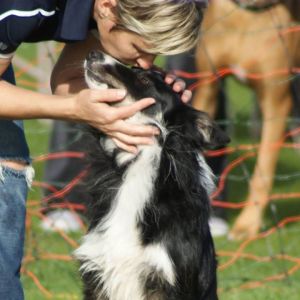I am mightily trying to revamp my agility goals. The biggest question that pops into my mind is how agility fits into my life mission. Agility is important to me, but it can’t be as important as the bigger things in life: people, relationships, connections, teaching, learning, sharing, and compassion. The problem is that when I start thinking about how to fit agility competitions into the bigger life mission thing and it’s like smashing a square peg into a round hole.
The scenario that keeps coming back to me is Grand Prix semi-finals at Cynosports last year. I had the run of my life with my little dog and knocked the last bar; it doesn’t change the connection that my dog and I had on the course, the subconscious movements, the lines, the teamwork or the energy that was expended. But the bar does mean that no placement happened on paper. I want to feel proud about that run, but since there wasn’t a placement there is some incongruity to the whole predicament. If I just want to feel connection and teamwork I can do that on the training field. So why compete? The mental torture playing that run over and over again in my mind was certainly a bad way to spend my time. Yet, in reality that run was fucking awesome; best run ever! And if you can feel that it was the best run ever even with the bar, what is the point of going up against others? Why go to competitions if failure is acceptable? At an agility trial am I trying to prove something? Satisfy my ego? Fill my time? Competing at agility shows don’t meet my life mission to help people and have compassion for myself and others. It costs a lot of money and takes a large expenditure of time and energy. I am exploring these ideas. Is there a way to go to competitions and enjoy my time there? Reward myself for the awesome but not quite perfect runs? Can I fit my life mission into trialing by whittling the corners down on the square peg?
The absolute best thing about all of this is that my dog doesn’t care one iota about what I decide. He is happy just to do stuff with me, he could care less what it is. I am so thankful to have a training partner that brings 110% to everything we do together. I want to honor that commitment. I want to satisfy my goals without stepping on my bigger ideals. I want to have my cake and eat it too.



